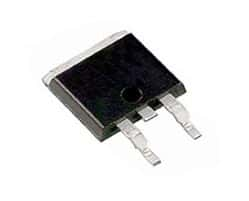Q. What is a Raspberry Pi?
A. The Raspberry Pi is a low cost, tiny computer, about the size of a credit card. You can plug your keyboard, mouse and your TV into it, and use it just as you would use a PC. It is capable of playing games, word-processing and working with spreadsheets. You can even watch high-definition video. The composite and HDMI out allows you to connect to any old analog TV, a digital TV or to a DVI Monitor. It is a wonderful device for kids to learn programming.
Q. What are the different models of Raspberry Pi available?
A. As of today (August, 2013) there are two: Model A and model B. Model A has 256MB RAM and one USB port. Model B has 512MB RAM, 2 USB ports and one Ethernet port. When you buy the Raspberry Pi, you get only the board. No SD card or power supply is included, but you can buy them separately. Pre-loaded SD cards are also available.
Q. What are the physical dimensions of the Raspberry Pi?
A. The Raspberry Pi dimensions are 85.6x56x21 (mm) or 3.37×2.21×0.827 (in.), with a small overlap as the connectors and the SD Card project over the edges. The Raspberry Pi weighs about 45 gm.
Q. What is the SoC used for the Raspberry Pi?
A. The SoC or System on Chip is a Broadcom BCM2835. This contains an ARM1176JZFS processor running at 700 MHz, with floating point and a Videocore 4 GPU. The GPU is capable of Blu-ray quality playback and uses H.264 at 40MBits/s. The fast 3D core is accessed using the supplied OpenVG and OpenGL ES2.0 libraries.
Q. How powerful is the Raspberry Pi?
A. The GPU or the Graphical Processing Unit operates with OpenGL ES2.0 and the hardware-accelerated OpenVG libraries, providing 1080p30 H.264 high-profile decode.
The GPU can provide 1Gpixel/s, 1.5Gtexel/s or 24GFLOPS of general-purpose compute along with several texture filtering and DMA infrastructure.
In real world terms, the performance is similar to a 300MHz Pentium 2; however, Raspberry Pi provides much swankier graphics. Overall, the graphical capabilities can be equated to an Xbox 1 level of performance.
Q. Will the Raspberry Pi blend?
A. Yes, extensive virtual simulations have been carried out, there were no failures.
Q. Is it possible to overclock the Raspberry Pi?
A. Most of the devices run comfortably at 800MHz. The latest operating system has options of changing the options for overclocking on the first boot. If you run “raspi-config” you can change the options again at any time, and your warranty stays intact. However, these settings are experimental and not every board can be expected to run stably at the highest setting. To restore stability, try reducing the settings for overclocking.
Q. How do you boot the Raspberry Pi?
A. You need a pre-loaded SD card to boot. After the initial boot, a USB HD can “take over”. The root partition on the SD card must contain the operating system. Currently Debian Linux is the default distribution, but you can use any other ARM Linux distro available on the downloads pages.
Q. What are the power requirements of the Raspberry Pi?
A. The device is powered by 5V from the micro USB. To switch on, simply plug in the USB, to switch off, remove the power.

 Although powerFETs or power Field Effect
Although powerFETs or power Field Effect